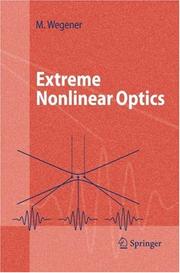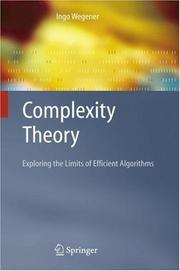| Listing 1 - 10 of 47 | << page >> |
Sort by
|

ISBN: 3860574493 9783860574492 Year: 1999 Volume: 59 Publisher: Tübingen: Stauffenburg,
Abstract | Keywords | Export | Availability | Bookmark
 Loading...
Loading...Choose an application
- Reference Manager
- EndNote
- RefWorks (Direct export to RefWorks)
Comparative linguistics --- Grammar --- German language --- Grammar, Comparative --- -Ashkenazic German language --- Hochdeutsch --- Judaeo-German language (German) --- Judendeutsch language --- Judeo-German language (German) --- Jüdisch-Deutsch language --- Jüdischdeutsch language --- Germanic languages --- -Grammar, Comparative --- Ashkenazic German language --- German language - Grammar, Comparative - Congresses. --- DEUTSCHE SPRACHE --- TYPOLOGIE (LINGUISTIQUE) --- SYNTAX
Book
ISSN: 03446778 ISBN: 3484311517 3110952238 9783484311510 Year: 1995 Volume: 151 Publisher: Tübingen: Niemeyer,
Abstract | Keywords | Export | Availability | Bookmark
 Loading...
Loading...Choose an application
- Reference Manager
- EndNote
- RefWorks (Direct export to RefWorks)
Die Untersuchung stellt die Kategorien der Nominalflexion des Deutschen unter dem Gesichtspunkt dar, wie die morphologische Realisierung von Numerus, Genus und Kasus an Nomen, Artikel, Adjektiv und Pronomen vom Lerner im natürlichen Deutsch-als-Zweitsprache-Erwerb erkannt und erlernt werden kann. Dazu werden zunächst die semantischen und syntaktischen Funktionen der einzelnen Kategorien aufgezeigt und die Systematizität der Flexionsparadigmen dargelegt, soweit eine solche im heutigen Deutsch noch gegeben ist, d.h. hier werden Regularitäten und Irregularitäten der Flexionsmorphologie dargestellt und dabei auch derzeit zu beobachtende Veränderungen im Flexionssystem berücksichtigt. Sodann wird für die einzelnen Flexive deren Validität, Salienz und Frequenz untersucht, für die Flexionsregeln deren Validität und Skopus auf der Basis eines Grundwortschatzes errechnet. Auf der Grundlage der Generativen Morphologie, insbesondere der Markiertheitstheorie, werden unmarkiert-reguläre, markiert-reguläre und irreguläre Formen unterschieden und deren Lernbarkeit nach unterschiedlichen Erwerbsstrategien diskutiert. Ziel ist, die Komplexität der deutschen Nominalflexion zu erklären und damit eine der Hauptschwierigkeiten der ausländischen Lerner transparenter zu machen. Kurzgefaßte didaktische Überlegungen und konkrete Vorschläge beschließen jeweils die linguistisch-deskriptiv orientierten Kapitel. Die Ergebnisse sind nicht nur für jeden, der mit DaZ-Erwerb und DaF-Unterricht zu tun hat, also für Psycholinguisten und Spracherwerbsforscher, Didaktiker und Lehrwerkautoren bzw. Lehrer von Interesse, sondern können auch dem 'nur' an Grammatik interessierten Germanisten das Phänomen der deutschen Nominalflexion neu und anders, nämlich aus der Lernerperspektive heraus, eröffnen.
Grammar --- German language --- -German language --- -Declension --- Study and teaching --- Noun --- Declension. --- Noun. --- Study and teaching. --- -Ashkenazic German language --- Hochdeutsch --- Judaeo-German language (German) --- Judendeutsch language --- Judeo-German language (German) --- Jüdisch-Deutsch language --- Jüdischdeutsch language --- Germanic languages --- Declension --- Ashkenazic German language --- German language - Declension --- German language - Study and teaching --- German language - Noun

ISSN: 14392674 ISBN: 354022291X 3642060900 3540266887 9783540222910 Year: 2005 Publisher: Berlin, Heidelberg : Springer Berlin Heidelberg : Imprint: Springer,
Abstract | Keywords | Export | Availability | Bookmark
 Loading...
Loading...Choose an application
- Reference Manager
- EndNote
- RefWorks (Direct export to RefWorks)
Following the birth of the laser in 1960, the field of "nonlinear optics" rapidly emerged. Today, laser intensities and pulse durations are readily available, for which the concepts and approximations of traditional nonlinear optics no longer apply. In this regime of "extreme nonlinear optics," a large variety of novel and unusual effects arise, for example frequency doubling in inversion symmetric materials or high-harmonic generation in gases, which can lead to attosecond electromagnetic pulses or pulse trains. Other examples of "extreme nonlinear optics" cover diverse areas such as solid-state physics, atomic physics, relativistic free electrons in a vacuum and even the vacuum itself. This book starts with an introduction to the field based primarily on extensions of two famous textbook examples, namely the Lorentz oscillator model and the Drude model. Here the level of sophistication should be accessible to any undergraduate physics student. Many graphical illustrations and examples are given. The following chapters gradually guide the student towards the current "state of the art" and provide a comprehensive overview of the field. Every chapter is accompanied by exercises to deepen the reader's understanding of important topics, with detailed solutions at the end of the book.
Nonlinear optics --- Optique non linéaire --- Nonlinear optics. --- Light & Optics --- Physics --- Physical Sciences & Mathematics --- Optics. --- Optique non linéaire --- EPUB-LIV-FT LIVPHYSI SPRINGER-B --- Optics, Nonlinear --- Physics. --- Gravitation. --- Electrodynamics. --- Quantum optics. --- Statistical physics. --- Dynamical systems. --- Engineering. --- Optics and Electrodynamics. --- Engineering, general. --- Quantum Optics. --- Statistical Physics, Dynamical Systems and Complexity. --- Classical and Quantum Gravitation, Relativity Theory. --- Light --- Optics --- Lasers --- Classical Electrodynamics. --- Complex Systems. --- Statistical Physics and Dynamical Systems. --- Mathematical statistics --- Construction --- Industrial arts --- Technology --- Statistical methods --- Photons --- Quantum theory --- Field theory (Physics) --- Matter --- Antigravity --- Centrifugal force --- Relativity (Physics) --- Dynamical systems --- Kinetics --- Mathematics --- Mechanics, Analytic --- Force and energy --- Mechanics --- Statics --- Dynamics --- Properties --- Acqui 2006 --- Dynamics.

ISBN: 3540210458 3642059147 3540274774 Year: 2005 Publisher: Berlin, Heidelberg : Springer Berlin Heidelberg : Imprint: Springer,
Abstract | Keywords | Export | Availability | Bookmark
 Loading...
Loading...Choose an application
- Reference Manager
- EndNote
- RefWorks (Direct export to RefWorks)
Complexity theory is the theory of determining the necessary resources for the solution of algorithmic problems and, therefore, the limits of what is possible with the available resources. An understanding of these limits prevents the search for non-existing efficient algorithms. This textbook considers randomization as a key concept and emphasizes the interplay between theory and practice: New branches of complexity theory continue to arise in response to new algorithmic concepts, and its results - such as the theory of NP-completeness - have influenced the development of all areas of computer science. The topics selected have implications for concrete applications, and the significance of complexity theory for today's computer science is stressed throughout.
Algorithms. --- Algorithmes --- Algorithms --- Computer Science --- Mathematical Theory --- Mathematics --- Engineering & Applied Sciences --- Physical Sciences & Mathematics --- Constructive mathematics. --- EPUB-LIV-FT LIVINFOR SPRINGER-B --- Mathematics, Constructive --- Algorism --- Computer science. --- Computer programming. --- Coding theory. --- Computer logic. --- Mathematical logic. --- Computer Science. --- Programming Techniques. --- Algorithm Analysis and Problem Complexity. --- Coding and Information Theory. --- Logics and Meanings of Programs. --- Mathematical Logic and Formal Languages. --- Algebra --- Arithmetic --- Foundations --- Logic, Symbolic and mathematical --- Computer software. --- Logic design. --- Data compression (Telecommunication) --- Digital electronics --- Information theory --- Machine theory --- Signal theory (Telecommunication) --- Computer programming --- Design, Logic --- Design of logic systems --- Electronic circuit design --- Logic circuits --- Switching theory --- Software, Computer --- Computer systems --- Informatics --- Science --- Information theory. --- Algebra of logic --- Logic, Universal --- Mathematical logic --- Symbolic and mathematical logic --- Symbolic logic --- Algebra, Abstract --- Metamathematics --- Set theory --- Syllogism --- Computer science logic --- Communication theory --- Communication --- Cybernetics --- Computers --- Electronic computer programming --- Electronic data processing --- Electronic digital computers --- Programming (Electronic computers) --- Coding theory --- Programming --- Logic, Symbolic and mathematical.

ISBN: 3878088280 9783878088288 Year: 1985 Volume: 28 Publisher: Tübingen: Narr,
Abstract | Keywords | Export | Availability | Bookmark
 Loading...
Loading...Choose an application
- Reference Manager
- EndNote
- RefWorks (Direct export to RefWorks)
German language --- Case --- 830.075 --- -Ashkenazic German language --- Hochdeutsch --- Judaeo-German language (German) --- Judendeutsch language --- Judeo-German language (German) --- Jüdisch-Deutsch language --- Jüdischdeutsch language --- Germanic languages --- Duitse literatuur--?.075 --- Case. --- -Duitse literatuur--?.075 --- 830.075 Duitse literatuur--?.075
Book
ISBN: 3319248219 3319248235 Year: 2016 Publisher: Cham : Springer International Publishing : Imprint: Springer,
Abstract | Keywords | Export | Availability | Bookmark
 Loading...
Loading...Choose an application
- Reference Manager
- EndNote
- RefWorks (Direct export to RefWorks)
This book reviews several aspects of the biological response to nanoscale particles on a molecular and cellular level. Nanoscale materials and nanoscale particles in particular have interesting properties and beneficial applications. While they thus have entered our daily lifes on many different levels (from electronics, over textiles, packaging or surface modifications, to biomedical applications), general rules describing their interaction with biological structures and biological matter are still difficult to derive. The existing literature suggests a variety of interaction schemes between nanoparticles and biological objects, not dispelling the public concerns about possible health effects and harmful properties. A systematic approach to the problem is needed and timely. This book specifically emphasizes bioanalytical problems starting from the characterization of the nanomaterials to the pitfalls and potential artifacts of state-of-the-art cytotoxicity assays that are frequently used to study harmful effects on cells. It also highlights the application of label-free bioanalytical techniques that can potentially complement the present approaches and hence provide new perspectives on this highly discussed cutting-edge field of research and public concern.
Analytical Chemistry --- Chemistry --- Physical Sciences & Mathematics --- Nanostructured materials. --- Nanomaterials --- Nanometer materials --- Nanophase materials --- Nanostructure controlled materials --- Nanostructure materials --- Ultra-fine microstructure materials --- Microstructure --- Nanotechnology --- Analytical biochemistry. --- Nanochemistry. --- Biochemistry. --- Medicine. --- Biotechnology. --- Analytical Chemistry. --- Biochemistry, general. --- Biomedicine general. --- Biological and Medical Physics, Biophysics. --- Chemical engineering --- Genetic engineering --- Clinical sciences --- Medical profession --- Human biology --- Life sciences --- Medical sciences --- Pathology --- Physicians --- Biological chemistry --- Chemical composition of organisms --- Organisms --- Physiological chemistry --- Biology --- Nanoscale chemistry --- Chemistry, Analytic --- Nanoscience --- Analytic biochemistry --- Biochemistry --- Composition --- Analytical chemistry. --- Biophysics. --- Biological physics. --- Biomedicine, general. --- Biological physics --- Physics --- Analysis, Chemical --- Analytical chemistry --- Chemical analysis --- Metallurgical analysis --- Mineralogy, Determinative --- Health Workforce --- Analytic chemistry
Book
ISSN: 09337636 ISBN: 9783110289473 9783110289657 3110289652 3110289474 9781283857185 1283857189 3110289652 Year: 2012 Volume: 61 Publisher: Berlin ; Boston : De Gruyter Mouton,
Abstract | Keywords | Export | Availability | Bookmark
 Loading...
Loading...Choose an application
- Reference Manager
- EndNote
- RefWorks (Direct export to RefWorks)
This is the first comprehensive description of Savosavo, a non-Austronesian (Papuan) language spoken by approximately 2,500 speakers on Savo Island, Solomon Islands. Based on primary field data recorded by the author, it provides an overview of all levels of grammar. In addition, a full chapter is dedicated to nominalization of verbs by means of one particular suffix, which occur in a number of constructions ranging from lexical to syntactic nominalization. The appendix provides glossed example texts and a list of lexemes.
Austronesian languages --- Grammar --- Solomon Islands --- Papuan languages --- Oceanic languages --- Grammar, Comparative --- Languages. --- Eastern Austronesian languages --- Proto-Oceanic language --- Melanesian languages. --- Grammar. --- Melanesia. --- Papuan Languages. --- Solomon Islands.
Book
ISBN: 3030324338 303032432X Year: 2019 Publisher: Cham : Springer International Publishing : Imprint: Springer,
Abstract | Keywords | Export | Availability | Bookmark
 Loading...
Loading...Choose an application
- Reference Manager
- EndNote
- RefWorks (Direct export to RefWorks)
This book is dedicated to label-free, non-invasive monitoring of cell-based assays and it comprises the most widely applied techniques. Each approach is described and critically evaluated by an expert in the field such that researchers get an overview on what is possible and where the limitations are. The book provides the theoretical basis for each technique as well as the most successful and exciting applications. Label-free bioanalytical techniques have been known for a long time as valuable tools to monitor adsorption processes at the solid-liquid interface in general – and biomolecular interaction analysis (BIA) in particular. The underlying concepts have been progressively transferred to the analysis of cell-based assays. The strength of these approaches is implicitly given with the name 'label-free': the readout is independent of any label, reagent or additive that contaminates the system under study and potentially affects its properties. Thus, label-free techniques provide an unbiased analytical perspective in the sense that the sample is not manipulated by additives but pure. They are commonly based on physical principles and read changes in integral physical properties of the sample like refractive index, conductivity, capacitance or elastic modulus to mention just a few. Even though it is not implied in the name, label-free approaches usually monitor the cells under study non-invasively meaning that the amplitude of the signal (e.g. electric field strength, mechanical elongation) that is used for the measurement is too low to interfere or affect. In contrast to label-based analytical techniques that are commonly restricted to a single reading at a predefined time point, label-free approaches allow for a continuous observation so that the dynamics of the biological system or reaction become accessible.
Analytical chemistry. --- Nanochemistry. --- Laboratory medicine. --- Cell culture. --- Biophysics. --- Biological physics. --- Analytical Chemistry. --- Laboratory Medicine. --- Cell Culture. --- Biological and Medical Physics, Biophysics. --- Biological assay. --- Assay, Biological --- Bioassay --- Biology --- Methodology --- Biological physics --- Medical sciences --- Physics --- Cultures (Biology) --- Cytology --- Clinical medicine --- Clinical pathology --- Diagnostic laboratory tests --- Laboratory diagnosis --- Laboratory medicine --- Medical laboratory diagnosis --- Diagnosis --- Pathology --- Nanoscale chemistry --- Analytical chemistry --- Nanoscience --- Analysis, Chemical --- Analytic chemistry --- Chemical analysis --- Chemistry, Analytic --- Chemistry --- Technique
Book
ISBN: 3658256877 3658256869 Year: 2019 Publisher: Wiesbaden : Springer Vieweg. in Springer Fachmedien Wiesbaden GmbH,
Abstract | Keywords | Export | Availability | Bookmark
 Loading...
Loading...Choose an application
- Reference Manager
- EndNote
- RefWorks (Direct export to RefWorks)
Auf der Grundlage einer differenzierten Kritik an der aktuellen Coaching-Forschung wird in diesem Open-Access-Buch eine Landkarte für die künftige Ausrichtung der Coaching-Prozessforschung vorgestellt. Als weiteres Ergebnis seiner Arbeit stellt Robert Wegener ein methodisches Verfahren zur Untersuchung «bedeutsamer Momente» vor. Ziel des Verfahrens ist es, dem Gegenstand Coaching und insbesondere dessen dynamischem und komplexem Charakter in besonderer Weise Rechnung zu tragen. Ausgangspunkt dafür ist das theoretische Verständnis «bedeutsamer Momente» im Coaching, das Wegener mit einer eigenen Coaching-Definition und verschiedenen psychotherapiebezogenen Forschungsrichtungen herleitet und für die Entwicklung und Erprobung seines Forschungsdesigns konsequent verwendet. Dieses Buch bildet eine erste Grundlage für eine programmatisch angelegte Forschung über «bedeutsame Momente» im Coaching. Der Inhalt Grundlagen des Coachings Kritische Bilanzierung der aktuellen Coaching-Forschung Herleitung einer prozessorientierten Coaching-Forschungslandkarte Rekonstruktion der besonderen Charakteristika «bedeutsamer Momente» im Coaching Die Zielgruppen Wissenschaftler, Dozierende und Studierende der Psychologie, der Erziehungswissenschaften und der Sozialen Arbeit Coaches, Supervisoren und Berater Der Autor Dr. Robert Wegener ist Co-Leiter der Coaching Studies FHNW. An der Fachhochschule Nordwestschweiz FHNW lehrt und forscht er zu Coaching und ist Coach in eigener Praxis. Sofern nicht anderweitig angegeben, wird dieses Buch unter einer Creative Commons Namensnennung 4.0 International Lizenz veröffentlicht. Weitere Details zur Lizenz entnehmen Sie bitte der Lizenzinformation auf http://creativecommons.org/licenses/by/4.0/deed.de.
Psychology, Applied. --- Consulting, Supervision and Coaching. --- Applied Psychology. --- Positive Psychology. --- Applied psychology --- Psychagogy --- Psychology, Practical --- Social psychotechnics --- Psychology --- Supervision. --- Counseling. --- Positive psychology. --- Counselling --- Helping behavior --- Psychology, Applied --- Clinical sociology --- Interviewing --- Personal coaching --- Social case work --- Supervisory relationships --- Management --- Supervision --- Counseling --- Positive psychology --- Psychological consultation
Book
ISBN: 3944309006 9700000045460 Year: 2014 Publisher: Project Gutenberg
Abstract | Keywords | Export | Availability | Bookmark
 Loading...
Loading...Choose an application
- Reference Manager
- EndNote
- RefWorks (Direct export to RefWorks)
Geology --- Structural
| Listing 1 - 10 of 47 | << page >> |
Sort by
|

 Search
Search Feedback
Feedback About UniCat
About UniCat  Help
Help News
News